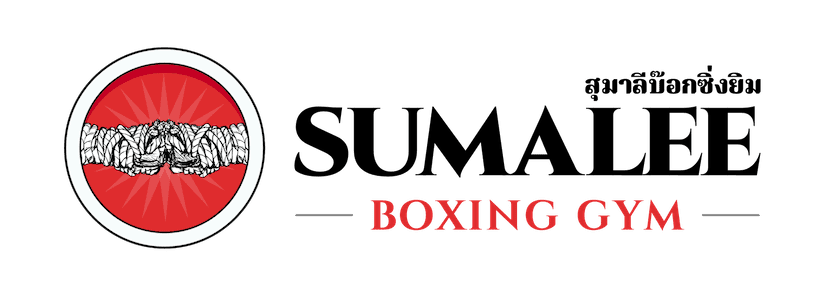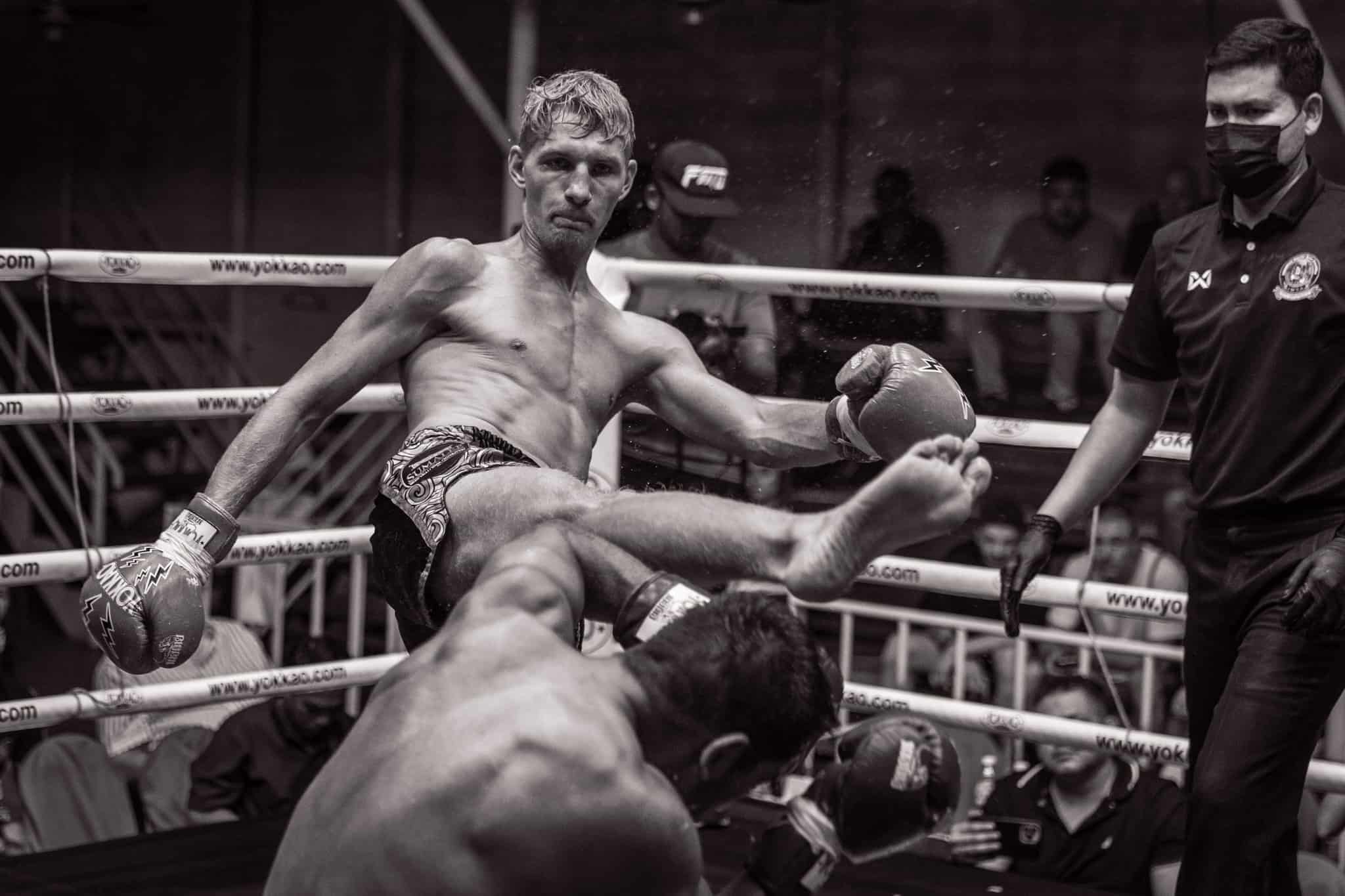
Unveiling the Legacy: A Fascinating History of Muay Thai
What is Muay Thai?
Muay Thai, commonly known as Thai Boxing in the West, is a martial art and combat sport originating in Thailand. This martial art is unique in the combination of punches, kicks, knee strikes, elbow strikes, and clinching techniques, referred to as the art of the eight limbs. Muay Thai fighters and practitioners train to use their entire body as a weapon, focusing on developing strength, speed, and agility in their techniques. They practice punches, kicks, elbows, and knees on heavy bags and pads with their trainers as well as during sparring sessions. While a fast-paced and dynamic sport, Muay Thai fighters use various techniques to outmanoeuvre and defeat their opponents. Muay Thai training also emphasises conditioning and endurance training to improve stamina and overall physical fitness.
While Thai boxing makes a fab exercise regime and self-defense practice, it is also a popular sport around the world, with both amateur and professional Muay Thai competitions held in multiple countries. The rules and regulations of a Muay Thai fight differ depending on the level and the country. For example, some professional-level Muay Thai bouts in Europe do not allow the use of elbow strikes. Moreover, while in the past, Muay Thai fighters would wrap a hemp rope around their hands, boxing gloves are now strictly required in all fights.
The History of Muay Thai
The history of Muay Thai dates back centuries to the kingdom of Siam, which is the historical name of Thailand. The art of the eight limbs can be traced back to various martial arts and fighting styles practised throughout the country during this time. One of the most ancient styles is Muay Boran, which Thai soldiers used. There are many differences between Muay Boran and modern-day Muay Thai, such as the former incorporates more wrestling techniques in addition to the usual punches, kicks, elbows, and knees. One thing that has remained the same since ancient times and the modern day is the love Thai people have for Muay Thai, which is how it became the national sport.
Besides starting as a combat sport, professional Muay Thai quickly became a form of entertainment for the Thai people. After WWII ended, the first formal rules and regulations for Muay Thai fights were established, including the use of gloves and the prohibition of particular techniques. Before the 20th century, Muay Thai fighters would use no protective equipment and wrap hemp rope around their wrists instead of boxing gloves. What’s more, it was only during the 20th century that this martial art began gaining popularity outside Thailand. Around this time, fighters began to travel to other countries to compete and showcase their skills.
Today, Thai boxing is practiced by millions of people worldwide, but despite its evolution and global reach, Muay Thai training remains deeply rooted in Thai culture. Let’s look at the key milestones in the history of Muay Thai.
https://www.high-endrolex.com/50
The Early Days of Muay Thai (1238-1438)
During the Sukhothai era (1238-1438), Muay Thai training was used extensively as a combat sport by soldiers in warfare and as a form of self-defence. The era’s military training focused on the use of external weapons and hand-to-hand combat techniques. Soldiers were trained to use their ‘internal weapons’ when possible, perfecting their kick, punch, elbow, and knee strike, as well as clinching. During this part of Muay Thai history, formal training centres and schools for Muay Thai were established. These centres were often located in Buddhist temples and run by monks skilled in Muay Thai. This led to Muay Thai becoming an essential cultural and social activity among Thai people. The sport was often used as entertainment for the royal court and the general public, attracting large crowds at every event.
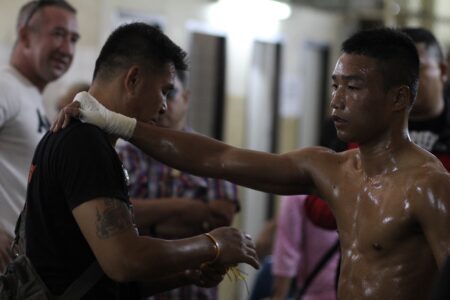
The Krungsri Ayuthhaya era (1350-1767)
During the Krungsri Ayutthaya era (1350-1767), Muay Thai continued to be used extensively as a combat sport. However, Thai boxing gained more and more traction as a form of entertainment and a competition sport, with Muay Thai fighters and trainers gaining high status and respect. As the competition side of the martial art became prevalent, training shifted towards developing strength, speed, and agility along with mastering the art of the eight limbs. One of the most famous fighters of the Ayutthaya era was Nai Khanomtom, who was captured by the Burmese during the Burmese-Siamese War in 1767. Legend has it that he was allowed to fight for his freedom and defeated ten Burmese fighters in a row using his Muay Thai skills.
The King Naresuan era (1590-1605)
The King Naresuan era (1590-1605) is a significant period in the history of Muay Thai as it saw the rise of King Naresuan, a skilled warrior, military strategist, and patron of the art of the eight limbs. With King Naresuan’s rule, Muay Thai became an essential part of military training, entertainment, and cultural activity, with organised competitions becoming increasingly popular. King Naresuan was a skilled Muay Thai fighter and is said to have competed in many matches throughout his life.
The King Narai era (1656-1688)
During the King Narai era (1656-1688), Muay Thai evolved from a combat sport to a more refined and stylized sport, with greater emphasis on strategy, technique, and aesthetics. For example, there was a greater emphasis on footwork, defensive techniques, and counter-attacks. Fighters were also required to observe strict rules and etiquette, such as showing respect to their opponents.
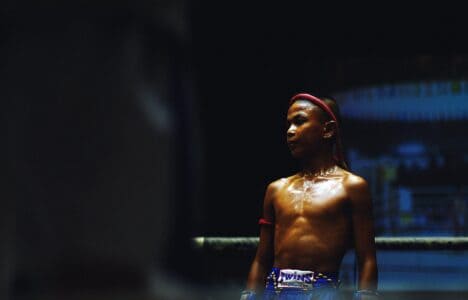
The King Prachao Sua era (1700-1720)
The King Prachao Sua era (1700-1720) in Thailand is another significant period in the history of Muay Thai. Legend has it that King Prachao Sua would enter tournaments in small cities and villages disguised as a common person. During this era, the techniques and strategies of Muay Thai were further developed and refined, with a greater emphasis on tactics and strategy. Fighters were required to master their kick, punch, knee strike and elbow strike and were trained to adapt to different opponents.
The Thonburi era (1767-1782)
The Thonburi era (1767-1782) in Thailand was a time of significant change and transformation in the history of Muay Thai as King Taksin, a skilled warrior and military leader, took the throne. As peace in the kingdom was slowly being restored, soldiers would use their Muay Thai skills in a more competitive style, with informal fights taking place between the best fighters of various military camps.
The Rama I era (1782-1809)
During the Rama I era (1782-1809), Muay Thai competitions became more formalised and organised, establishing official training schools and introducing standardised rules and regulations. New techniques and strategies, such as sweeps, throws, and joint locks, were also introduced. After rising to fame in 1767 after earning freedom from his Burmese capturers, Nai Khanomtom continued to fight and teach Muay Thai during this era. Nai Khanomtom is also credited with popularising the Wai Kru Ram Muay dance and using the Mongkol and Prajioud, two traditional accessories Muay Thai fighters wear.
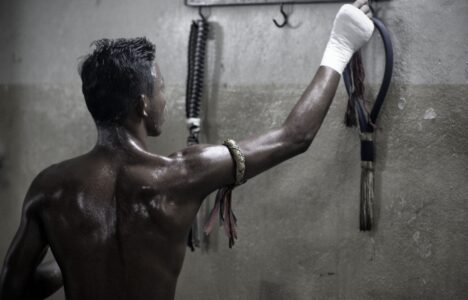
The King Rama V era (1868-1910)
The King Rama V era (1868-1910) was a pivotal time in the history of Muay Thai. Under King Rama V’s rule, Muay Thai training was promoted as Thailand’s national sport. King Rama V established the first formalised system of weight classes and introduced a range of protective equipment, including gloves and shin guards, to make the sport safer for fighters. He also established the first international Muay Thai competition, inviting practitioners from neighbouring countries to compete against Thai fighters.
The 20th Century
Thailand’s first boxing ring was built in 1921 at Suan Kulap, during the golden age of Muay Thai (early-1980s to mid-1990s). During the golden age, Muay Thai training also underwent a process of stylistic refinement, with fighters learning how to adopt a more upright stance and focus on precise strikes and counterattacks. Clinch work and grappling were also refined, with a greater emphasis on technique and strategy. One of the most famous fighters of the golden age was Pud Pad Noy Worawut, who competed in the 1970s. He is credited with popularising the Teep (push kick) and developing the “Muay Fimeu” fighting style, which emphasizes speed and technique over brute strength.
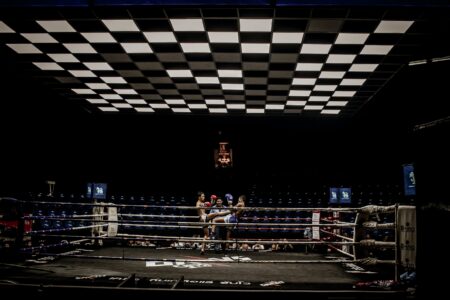
The Wai Kru
Wai Kru, also known as Ram Muay, is a traditional pre-fight ritual in Muay Thai. It is performed to pay homage to the fighter’s teacher, to show respect to the art of Muay Thai, and to seek blessings for victory and protection during the fight. Traditionally, the Wai Kru is performed before every fight, with the fighter wearing traditional Muay Thai attire. Fighters perform a series of symbolic movements, including bows, kneels, and hand gestures in a specific order as they move around the boxing ring. The ritual is accompanied by one particular traditional song, as shown in this video. The Wai Kru (Ram Muay) is an integral part of the cultural heritage of Muay Thai and is a way to connect modern fighters with the traditions and history of the sport. It is also a way for Muay Thai warriors to centre themselves before the fight, focus their energy and prepare themselves mentally and spiritually for the challenges ahead.
How Was Muay Thai Introduced To The World?
Muay Thai was introduced to the world primarily through its inclusion in international martial arts competitions and events. In the 20th century, Muay Thai fighters began competing in international kickboxing and mixed martial arts events, bringing the sport to a global audience.
One of the earliest examples of this was the World Championship Kickboxing event held in Tokyo, Japan, in 1975, which included a Muay Thai demonstration by Thai fighters. This event helped to popularise Thai boxing as a striking art and paved the way for the inclusion of Muay Thai in other international competitions, such as the Ultimate Fighting Championship (UFC).
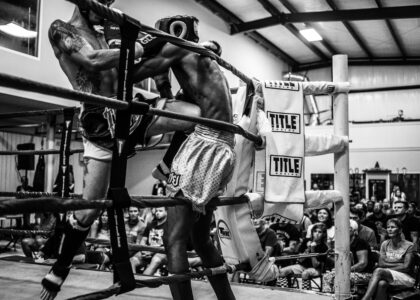
Muay Thai in the 21st Century
One of the key differences between traditional and modern-day Muay Thai is the introduction of gloves (instead of hemp rope) and other protective equipment. This has made the sport safer for fighters and allowed a wider range of striking techniques to be used.
Additionally, the rules and regulations of modern Muay Thai have been standardised and codified, with weight classes, time limits, and judging criteria all established to create a more regulated and organised sport.
In terms of technique, modern Thai boxing fighters have incorporated elements from other combat sports, such as boxing, kickboxing, and Brazilian Jiu-Jitsu, to create a more diverse and adaptable fighting style.
Modern-day professional Muay Thai fighters train using pads with their trainers, heavy bags independently, and in sparring sessions with their training partners. They also include strength and conditioning in their training regime to gain the stamina, endurance, and explosiveness needed to compete at the highest levels.
Today, many professional Muay Thai fighters (Thai and Westerners) strive to reach ONE Championship. ONE Championship is the world’s largest martial arts organisation, with regular bouts in Thailand and the rest of the world while broadcasting to over 170 countries. Bouts occur in both the traditional boxing ring and ONE’s unique cage-style ring, and the fighters wear MMA gloves, which are smaller than standard Muay Thai gloves.
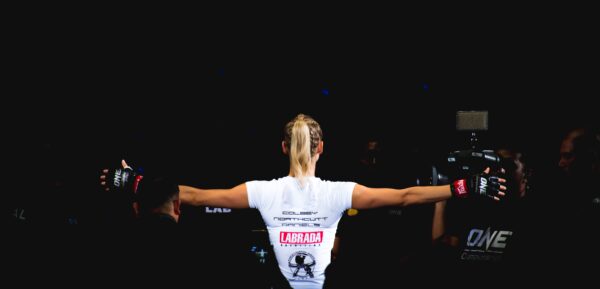
The ever-increasing popularity of Thai boxing draws many Westerners to Thailand looking to train in a traditional-style training camp with real Thai fighters. Westerners can find many professional-level fighting opportunities by staying at a training camp.
These can range from small local fights to large-scale televised events like Fairtex Fight at Lumpinee Stadium in Bangkok. Lumpinee, which opened in 1956, is the largest stadium in Thailand, run by the Royal Thai Army.
Like all sports, fighting at the best stadiums like Lumpinee requires years of consistent and disciplined hard work! However, it is not uncommon for passionate Western Thai boxing practitioners with no previous fighting history to get their first fight at a small local stadium after putting in a month or two of consistent training at a training camp.
For example, many of our students at Sumalee Boxing Gym have fought at Bangla Stadium in Patong, Phuket.
Muay Thai has become a dynamic and exciting combat sport with a rich history and a growing global following. It continues to evolve and adapt to combat sports’ changing demands while maintaining its traditional roots and cultural significance.
If you are interested in further reading, here are some highly recommended books on Muay Thai.
